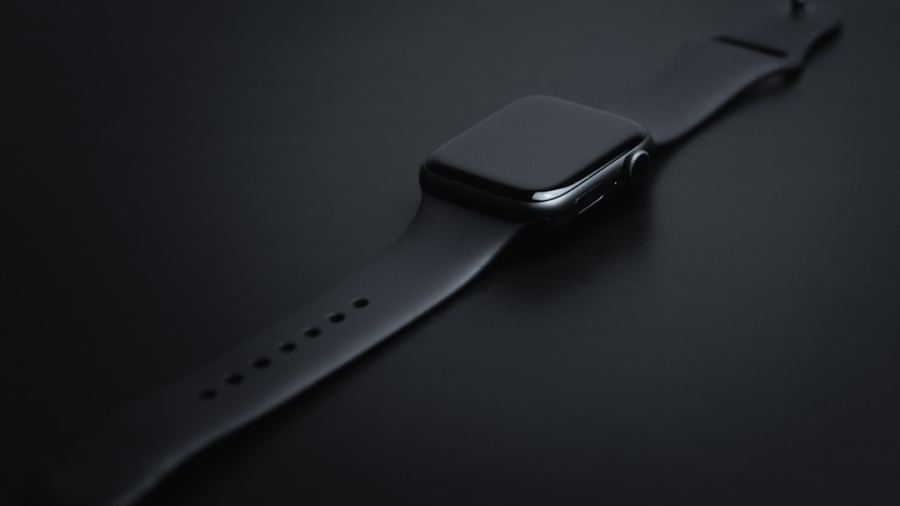The advent of wearable technology has revolutionized various sectors, and healthcare is no exception. Wearables, which include devices such as smartwatches, fitness trackers, and specialized medical sensors, have emerged as pivotal tools in the monitoring and management of health. These devices are designed to be worn on the body, providing real-time data that can be invaluable for both patients and healthcare providers.
The integration of wearables into healthcare systems has not only enhanced the way health data is collected but has also transformed patient care paradigms, enabling a shift from reactive to proactive health management. As the global population ages and the prevalence of chronic diseases rises, the demand for innovative healthcare solutions has intensified. Wearable technology offers a promising avenue for addressing these challenges by facilitating continuous health monitoring outside traditional clinical settings.
This shift is particularly significant in the context of remote patient monitoring (RPM), where wearables play a crucial role in enabling healthcare professionals to track patients’ health metrics in real time. By harnessing the power of data analytics and connectivity, wearables can provide insights that lead to timely interventions, ultimately improving patient outcomes and reducing healthcare costs.
Key Takeaways
- Wearables in healthcare are revolutionizing the way patients are monitored and engaged in their own health management.
- Remote patient monitoring with wearables offers benefits such as real-time data collection, early detection of health issues, and reduced healthcare costs.
- Types of wearables for remote patient monitoring include smartwatches, fitness trackers, and medical-grade devices for specific health conditions.
- Wearables improve patient engagement and compliance through personalized feedback, reminders, and the ability to track progress over time.
- Wearables play a crucial role in chronic disease management by providing continuous monitoring and empowering patients to take control of their health.
Benefits of Remote Patient Monitoring with Wearables
Remote patient monitoring through wearables offers a multitude of benefits that extend beyond mere convenience. One of the most significant advantages is the ability to collect continuous health data, which allows for more accurate assessments of a patient’s condition. For instance, devices that monitor heart rate variability or blood glucose levels can provide healthcare providers with a comprehensive view of a patient’s health status over time.
This continuous stream of data enables clinicians to identify trends and make informed decisions regarding treatment plans, potentially preventing complications before they arise. Moreover, remote patient monitoring can significantly enhance patient engagement. When patients are equipped with wearables that track their health metrics, they become active participants in their own care.
This empowerment can lead to improved adherence to treatment regimens and lifestyle modifications. For example, a study published in the Journal of Medical Internet Research found that patients using wearable devices were more likely to adhere to prescribed exercise programs compared to those who did not use such technology. By fostering a sense of ownership over their health, wearables can motivate patients to take proactive steps toward better health outcomes.
Types of Wearables for Remote Patient Monitoring

The landscape of wearables for remote patient monitoring is diverse, encompassing a range of devices tailored to meet various health needs. Smartwatches, such as the Apple Watch and Fitbit, have gained popularity for their ability to monitor heart rate, physical activity, and even sleep patterns. These consumer-oriented devices often come equipped with features that allow users to track their fitness goals while simultaneously providing valuable data to healthcare providers.
In addition to smartwatches, specialized medical wearables have emerged that cater specifically to chronic disease management. For instance, continuous glucose monitors (CGMs) are essential for individuals with diabetes, providing real-time glucose readings that help patients manage their condition effectively. Similarly, wearable ECG monitors can detect arrhythmias and other cardiac issues, alerting both patients and healthcare providers to potential problems.
These devices not only enhance patient safety but also facilitate timely interventions that can prevent serious complications.
How Wearables Improve Patient Engagement and Compliance
Wearable technology has proven to be a game-changer in enhancing patient engagement and compliance with treatment protocols. One of the key factors contributing to this improvement is the immediate feedback that wearables provide. Patients can receive real-time notifications about their health metrics, such as reminders to take medication or alerts when their heart rate exceeds a certain threshold.
This instant feedback loop encourages patients to stay vigilant about their health and fosters a sense of accountability. Furthermore, many wearable devices come with accompanying mobile applications that allow users to visualize their health data over time. This visualization can be particularly motivating; seeing progress in physical activity levels or weight loss can inspire patients to maintain or even intensify their efforts.
A study conducted by the American Journal of Preventive Medicine found that individuals who used wearable fitness trackers reported higher levels of physical activity compared to those who did not use such devices. By making health data accessible and engaging, wearables can significantly enhance patient compliance with prescribed health regimens.
The Role of Wearables in Chronic Disease Management
Chronic diseases such as diabetes, hypertension, and heart disease require ongoing management and monitoring. Wearable technology plays a crucial role in this context by providing continuous data that can inform treatment decisions and lifestyle adjustments. For instance, patients with hypertension can use wearable blood pressure monitors to track their readings throughout the day, allowing them to identify patterns and triggers that may affect their condition.
This information can be invaluable for healthcare providers when adjusting medication dosages or recommending lifestyle changes. Moreover, wearables can facilitate remote consultations between patients and healthcare providers, reducing the need for frequent in-person visits. Telehealth platforms integrated with wearable data allow clinicians to review patients’ health metrics before consultations, enabling more focused discussions about treatment plans.
This approach not only saves time for both patients and providers but also enhances the overall quality of care by ensuring that discussions are based on accurate and up-to-date information.
Data Security and Privacy Concerns with Wearables

While the benefits of wearables in healthcare are substantial, they also raise important concerns regarding data security and privacy. The collection of sensitive health information through these devices necessitates robust security measures to protect against unauthorized access and data breaches. Patients must trust that their personal health data will be handled with care and confidentiality; any lapse in security could undermine this trust and deter individuals from using wearable technology.
Regulatory frameworks such as the Health Insurance Portability and Accountability Act (HIPAA) in the United States set standards for protecting patient information, but compliance varies among manufacturers of wearable devices. Some companies may not implement adequate security protocols or may share data with third parties without explicit consent from users. As a result, it is essential for consumers to be informed about how their data will be used and what measures are in place to safeguard it.
Ongoing discussions about data privacy in the context of wearables will be crucial as technology continues to evolve.
Integration of Wearables with Electronic Health Records
The integration of wearable technology with electronic health records (EHRs) represents a significant advancement in healthcare data management. By connecting wearables directly to EHR systems, healthcare providers can access real-time patient data seamlessly within their existing workflows. This integration allows for a more holistic view of a patient’s health history and current status, facilitating better-informed clinical decisions.
For example, if a patient’s wearable device detects an abnormal heart rhythm, this information can be automatically uploaded to their EHR, alerting the healthcare provider immediately. Such timely access to critical data can lead to quicker interventions and improved patient outcomes.
Future Trends and Developments in Wearables for Remote Patient Monitoring
The future of wearables in remote patient monitoring is poised for significant advancements driven by technological innovation and evolving healthcare needs. One emerging trend is the incorporation of artificial intelligence (AI) into wearable devices. AI algorithms can analyze vast amounts of health data collected from wearables, identifying patterns that may not be immediately apparent to healthcare providers.
This capability could lead to predictive analytics that help anticipate health issues before they become critical. Another promising development is the expansion of biosensors embedded within wearables. These sensors can monitor a wider array of physiological parameters beyond traditional metrics like heart rate or steps taken.
For instance, researchers are exploring biosensors capable of detecting biomarkers related to stress levels or inflammation through sweat analysis. Such advancements could provide deeper insights into an individual’s overall health status and enable more personalized treatment approaches. As wearables continue to evolve, interoperability will also become increasingly important.
The ability for different devices and platforms to communicate effectively will enhance the overall utility of wearable technology in healthcare settings. This interoperability will facilitate comprehensive data sharing among various stakeholders—patients, providers, insurers—ultimately leading to more coordinated care. In conclusion, the integration of wearable technology into healthcare represents a transformative shift toward more proactive and personalized patient care.
In the rapidly evolving field of healthcare technology, wearables have become a cornerstone for enhancing remote patient monitoring. These devices not only track vital signs but also provide real-time data to healthcare providers, enabling timely interventions and personalized care. A related article that delves into the capabilities of smartwatches, which are a subset of wearables, is titled “Which Smartwatches Allow You to View Pictures on Them?” This article explores the multifunctionality of smartwatches, highlighting their potential beyond health monitoring. You can read more about it here.
FAQs
What are wearables?
Wearables are electronic devices that can be worn on the body as accessories or implants. They are designed to collect data about the user’s health and fitness.
What is remote patient monitoring (RPM)?
Remote patient monitoring (RPM) is a method of healthcare delivery that uses technology to monitor patient health outside of traditional healthcare settings. It allows healthcare providers to track patient data remotely.
How do wearables support remote patient monitoring?
Wearables support remote patient monitoring by continuously collecting and transmitting patient data, such as heart rate, activity levels, and sleep patterns, to healthcare providers. This allows for real-time monitoring and early detection of health issues.
What are the benefits of using wearables for remote patient monitoring?
The use of wearables for remote patient monitoring allows for more personalized and proactive healthcare. It can lead to early detection of health issues, better management of chronic conditions, and improved patient outcomes.
What types of wearables are commonly used for remote patient monitoring?
Common types of wearables used for remote patient monitoring include smartwatches, fitness trackers, and medical-grade devices such as continuous glucose monitors and ECG monitors.
Are there any challenges associated with using wearables for remote patient monitoring?
Challenges associated with using wearables for remote patient monitoring include data security and privacy concerns, as well as the need for healthcare providers to effectively manage and interpret the large amount of data collected from wearables.

